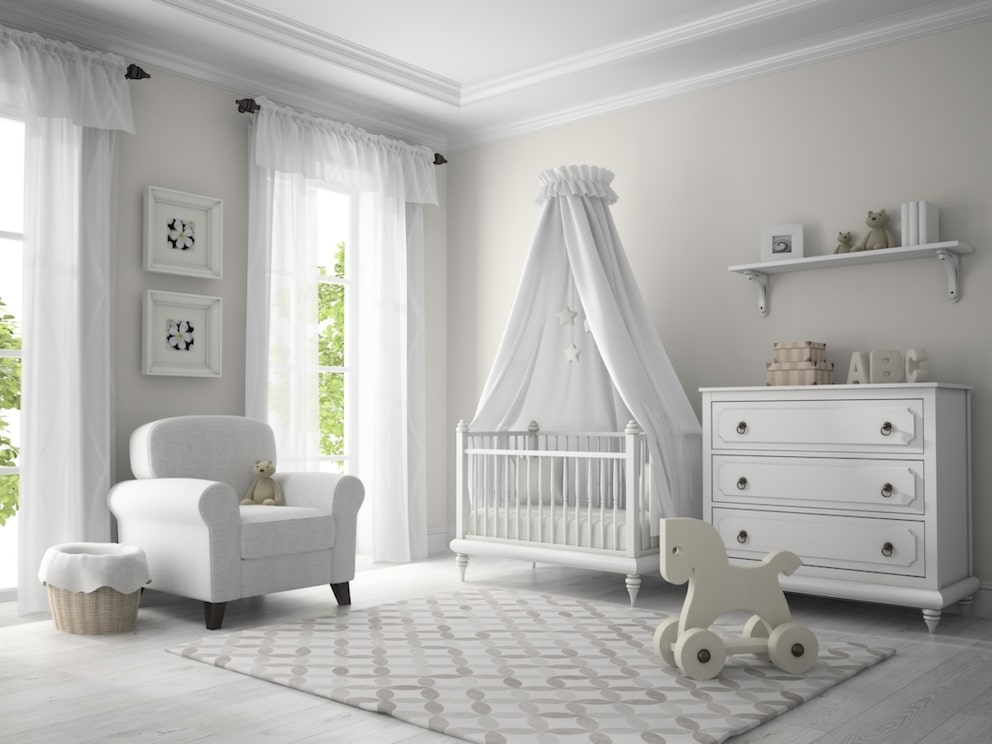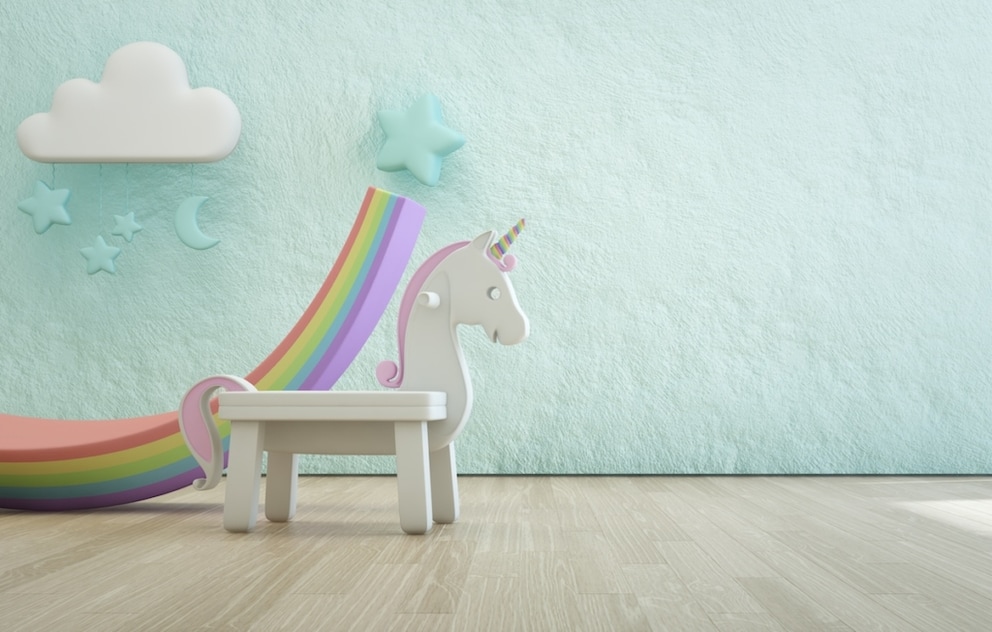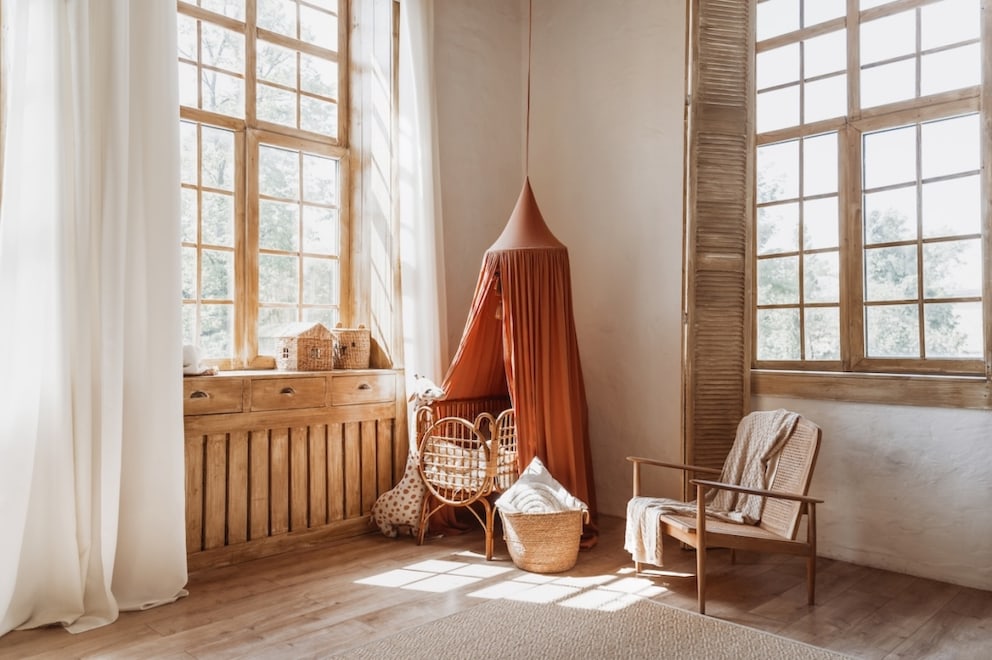July 7, 2025, 10:50 am | Read time: 4 minutes
What was once considered fashionable in children’s rooms is now rarely seen—and for good reason. myHOMEBOOK author and interior designer Odett Schumann explains what is currently out of style in children’s room decor and suggests more suitable alternatives.
If you’re looking to furnish your child’s room in a contemporary style, there are certain looks you can’t ignore. Others, however, seem to have fallen out of fashion. Which styles are no longer in demand for children’s rooms?
1. Patterned Wallpaper on All Four Walls
It’s advisable to avoid patterned wallpaper in children’s rooms for several reasons—at least when it comes to covering all four walls. This involves a lot of effort for what is likely a short period of use. As children grow, their tastes often change. It’s quite possible that the pattern chosen today may no longer be desired by your child in two or three years.
Moreover, patterns, especially if they are intricate and colorful, can be overwhelming and overstimulating for younger children. With plenty of toys and various colors or patterns on furniture, textiles, and accessories, there’s already a lot going on in a child’s room. If you still want patterned wallpaper, it’s better to use it on just one wall, making it a statement wall in the room.
2. White Furniture
For a while, white furniture was particularly popular. However, it has proven to be impractical over time and is now considered less trendy for children’s rooms. As pure as the color white may seem, it is unfortunately “ideal” for visible scratches and scribbles.

With the trend toward a sustainable, natural environment, painted children’s furniture is increasingly falling out of favor. Simple pieces made from untreated light wood are preferred. Color is also welcome: brightly stained beds, shelves, or cabinets contribute to a more child-friendly atmosphere. This is a refreshing change after children’s rooms have appeared noticeably neutral and almost colorless in recent years.
3. Fantasy Creatures and Distant Galaxies
It’s well known that children have vivid imaginations. Dragons, unicorns, and fairies are part of their play world, but not necessarily on their walls anymore. Fantasy creatures or distant galaxies are now rarely seen in children’s rooms; instead, realistic depictions of circus scenes or mountain landscapes are more common.

Today, walls are often adorned with a suggested sky featuring rising balloons, floating clouds, smiling stars, and a colorful rainbow. Instead of exotic jungle animals like monkeys, elephants, and tigers, local mice, birds, and foxes are now preferred in children’s rooms.
Also of interest: 7 Trends That Will No Longer Be Popular in Bedrooms in 2024
4. No Classic Colors
For many years, children’s rooms were primarily decorated in the pastel colors pink and blue, which were meant to visually indicate the baby’s gender. As this stereotypical assignment is increasingly questioned, more neutral tones like sorbet yellow, sand, green, or gray are being used. If you still want to furnish the children’s room in a classic yet contemporary way, opt for old rose and mint instead of pink and blue. The current Pantone color of the year 2024, Peach Fuzz, is also ideal for a child-friendly environment.

Creative Wall Design for Kids’ Rooms – Top Ideas

Children’s Room Trends for 2022

6 Children’s Room Trends for 2025
5. Canopy and Teepee

This once-popular style for children’s rooms is currently not in high demand. Canopies and teepees undoubtedly have their charm and will surely be part of the decor again someday. However, while teepees provide a playful retreat for little ones, they also require a certain amount of space. With rising rental prices, living spaces are getting smaller, and not every family has that much room in the children’s room.
As for canopies, the question of their actual necessity arises. After all, newborns and babies often sleep in the parents’ bed for the first few months and rarely in the children’s room. By the time they move into their own space, a new bed may already be needed.

